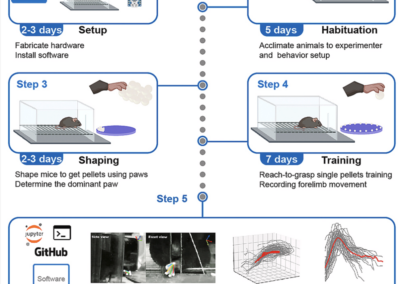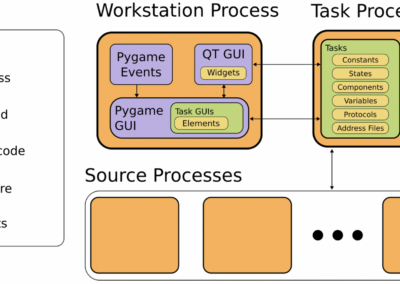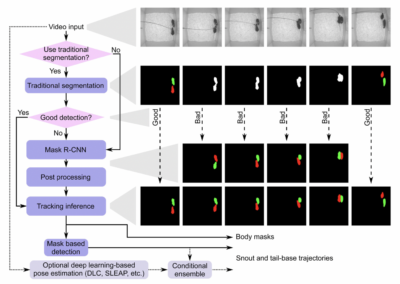Tracking animal behavior can require hours of manpower and resources. Unique and powerful solutions are becoming a reality with the help of open-source technology. One such solution coming from the Ribeiro lab is D-Track. This remarkably intuitive dolphin tracker uses two cameras in order to track aquatic animals within captivity. By taking the trajectories of where the cameras pointed, a 3-dimensional model can quantify the time and position of the animal within the pool. The Open Source Computer Vision Library (OpenCV) and Python provided the tools in order to build tracking vectors within the schematics of the pool. Getting an accurate position required the use of a Gaussian color filter to reduce the jitter associated with tracking while the dolphin is under the surface of the pool. Recording of behavior is rare for aquatic animals due to the nature of observing a subject in a body of water, D-Track provides an overview of what daily life is like for the dolphin within its enclosure. D-Track shows how a minimal set up of off-the-shelf cameras and open-source software can come together to provide a better understanding of this type of animal in captivity. Statistical analysis of where the dolphin spent most of its time and how fast it swam around the scene provides qualitative data. Comparing this data across different dolphins can improve the actions of both zoo trainers and the architects who build the enclosures. Aquatic animals in the open ocean are exposed to a variety of life and stimuli, providing education and humane condition while in captivity is an important mission of every zoo. This research tool was created by your colleagues. Please acknowledge the Principal Investigator, cite the article in which the tool was described, and include an RRID in the Materials and Methods of your future publications. Project portal RRID:SCR_021389; Software RRID:SCR_021394 Check out the D-Track website for the latest updates on this project. Read more about DeepLabCut from the original PLOS One publication from 2018. Take a look at the real-time tracking ability of D-Track on YouTube! This post was brought to you by Paul Genest. This project summary is a part of the collection from neuroscience undergraduate students in the Computational Methods course at American University. Check out projects similar to this!D-Track

Read the Documentation
D-Track Publication
D-Track Example Video
Thanks Paul!
Have questions? Send us an email!








